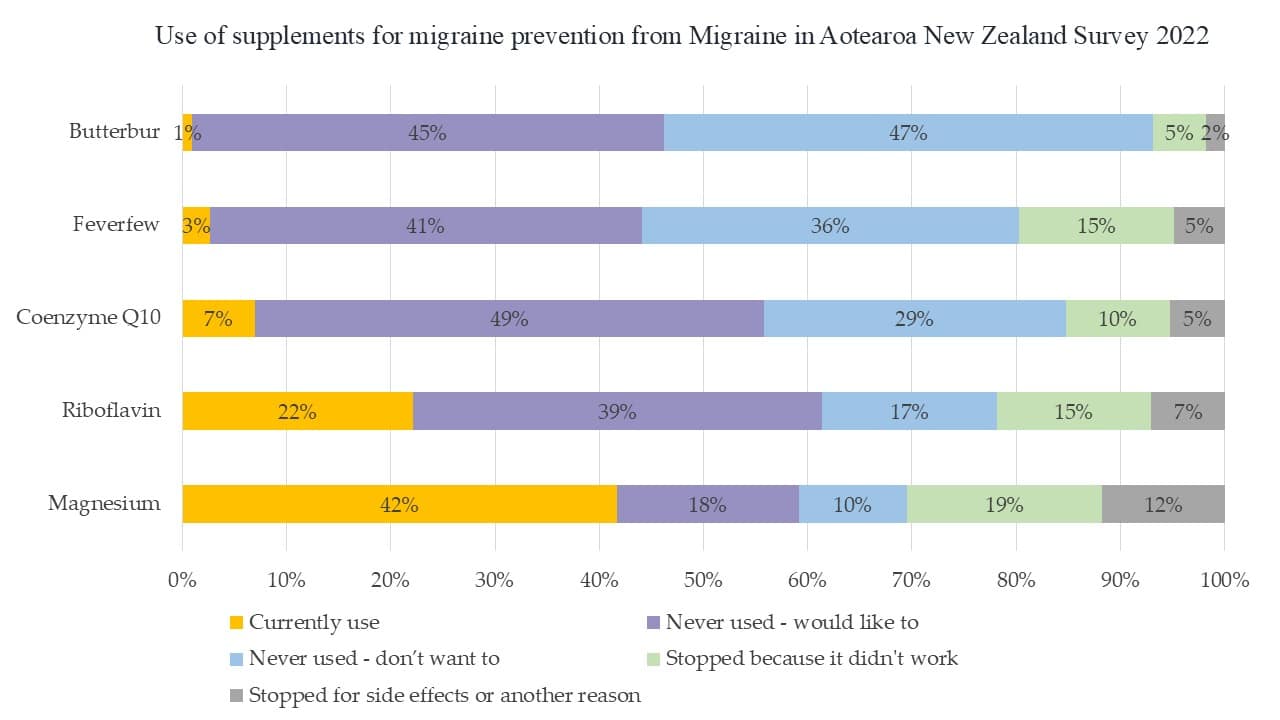The Migraine in Aotearoa New Zealand Survey collected a range of information about people’s experiences of migraine in 2022. We have used that information in our application to Pharmac to fund galcanezumab (Emgality), in presentations and webinars to health professionals and to publish articles in the scientific literature. This has helped us gain media coverage and raise awareness about the impact of migraine and the need for better treatments in New Zealand.
We have just published our fourth and final article from the survey in the Journal of Clinical Medicine, as part of a special issue on migraine headache: symptoms, diagnosis and current treatment. This was an invited paper, which meant the usual publishing fees were waived.
The key findings from this article were that although at least half of respondents to our survey were using supplements and complementary therapies for migraine prevention, many people had tried these approaches in the past and they hadn’t worked or had stopped for another reason. Others would like to try some of these treatments but cost and availability were barriers.
It highlights what we know about migraine – there is no single approach that works for everyone and it’s a matter of trial and error to find what makes a difference and what doesn’t. And when you have frequent and disabling migraine, you tend to try and want to try lots of treatments – anything that might help, even a little bit.
The reality is that none of these approaches are effective for everyone (or even most people) and most of the time, the effect is partial. They might knock down the severity or frequency of migraine attacks, but they are no magic bullet.
What we all want are treatments that do more than palliate and relieve symptoms. We want treatments that get to the heart (or the brain) of what is causing migraine disease, and deal with the root of the issue. The new anti-CGRP medications are the first wave of this type of treatment, with more being tested and trialed.
This research has been extremely valuable in raising the profile of migraine and how far behind we are in New Zealand in terms of accessing treatments that are improving the lives of people in other countries. Many thanks again to all of the people who took part in our survey.
And look out for another survey we will be sending out soon, to ask about the use of triptans (medication specifically to treat migraine attacks) and whether we need more than the two currently available in New Zealand.
Find our press release here and media features.
Imlach F, Garrett, S. Use of non-pharmacological approaches for migraine treatment: Results from the Migraine in Aotearoa New Zealand survey. Journal of Clinical Medicine 2025 14(12), 4023; https://doi.org/10.3390/jcm14124023.
You can read more about the survey and find the other three articles we’ve published on the Migraine Foundation website.


